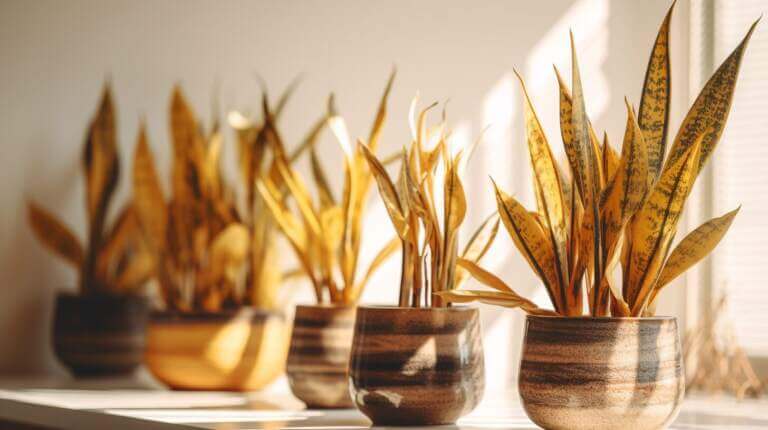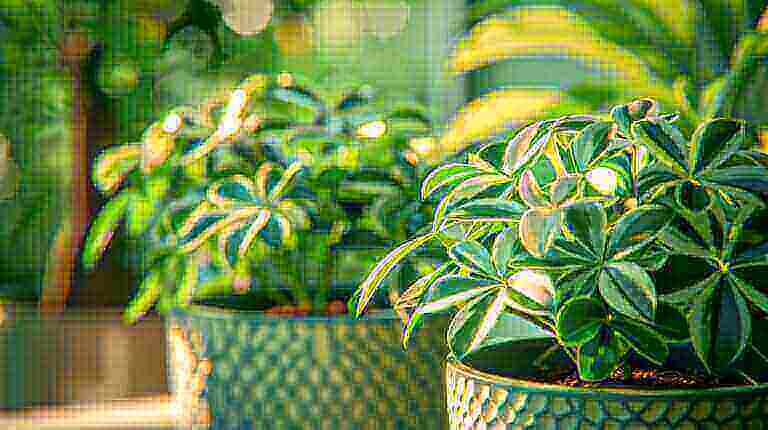Propagating Nerve Plants and Fittonia Albivenis: A Step-by-Step Fittonia Plant Propagation Guide for Beginners
Nerve plants, also known as Fittonia albivenis, are popular houseplants grown for their beautiful foliage. This step-by-step guide will provide beginners with all the information they need to successfully propagate nerve plants and fittonias. Whether you want to expand your indoor garden or give plants as gifts, propagating these striking plants is a rewarding experience. The propagation methods include taking stem cuttings and propagating them in water or soil, as well as propagating from individual leaves. It is important to provide high humidity, consistent moisture, and indirect light for successful propagation.
Key Takeaways:
- Propagating nerve plants and fittonias is a rewarding experience for beginners.
- Methods include stem cuttings in water or soil, as well as leaf propagation.
- High humidity, consistent moisture, and indirect light are crucial for successful propagation.
- Expansion of your indoor garden and gifting plants are additional benefits of propagation.
- Proper aftercare, including watering, fertilization, and maintaining humidity, ensures the health of propagated plants.
Benefits of Propagating Nerve Plants and Fittonias
Propagating nerve plants and fittonias offers several compelling benefits that make it worth the effort for both novice and experienced indoor gardeners. By expanding your collection through propagation, you can create a vibrant and diverse indoor garden with an array of stunning plants. Whether you’re looking to fill empty spaces or create a lush display, propagating these plants allows you to enhance the aesthetic appeal of your living space.
Furthermore, propagating nerve plants and fittonias provides an opportunity to give unique and personalized gifts to friends and family. Instead of buying generic presents, you can present your loved ones with carefully nurtured plants that carry sentimental value. These propagated plants serve as a thoughtful and eco-friendly gift option, fostering a deeper connection between the recipient and nature.
Another significant benefit of propagation is its ability to rejuvenate tired plants. Over time, houseplants can become leggy or lose their vitality. By propagating fresh cuttings from these tired plants, you can revive their appearance and promote healthier growth. This process allows you to breathe new life into older plants, ensuring they continue to flourish and add beauty to your indoor garden.
Table: Comparing the Benefits of Propagating Nerve Plants and Fittonias
| Benefits | Propagating Nerve Plants | Propagating Fittonias |
|---|---|---|
| Expanding Your Indoor Garden | ✓ | ✓ |
| Creating Personalized Gifts | ✓ | ✓ |
| Rejuvenating Tired Plants | ✓ | ✓ |
These benefits make propagating nerve plants and fittonias a rewarding and worthwhile endeavor for any plant enthusiast. Whether you’re looking to expand your collection, share your love for plants with loved ones, or revive tired plants, propagation offers endless possibilities for growth, both literally and figuratively.
Best Time To Propagate Fittonia Albivenis
When it comes to propagating nerve plants and fittonias, timing is key. The best time for propagation is during the spring and early summer months. This is when these plants start pushing out lush new growth, making it the ideal time to take stem cuttings. Taking cuttings during this period increases the success rate of propagation, as the plants have abundant nutrients and energy to support the development of new roots and foliage.
In addition to the favorable growth conditions, propagating during spring and early summer allows you to establish new plants before the arrival of colder months. This gives them a head start and ensures they are well-established before facing potential setbacks caused by cooler temperatures.
By propagating nerve plants and fittonias at the right time, you can take advantage of the plants’ natural growth cycle and maximize the chances of successful propagation.
Table: Ideal Propagation Timeframes for Nerve Plants and Fittonias
| Propagation Method | Best Time for Propagation |
|---|---|
| Stem Cuttings in Soil or Water | Spring to Early Summer |
| Propagation from Individual Leaves | Spring to Early Summer |
Propagating Nerve Plants and Fittonias in Soil
When it comes to propagating nerve plants and fittonias, propagating in soil is a common and successful method. To get started, select healthy shoots with vigorous growth from the parent plant. Opt for longer stems, as you will be removing the bottom leaves. Prepare small plant pots or seed trays with a general-purpose houseplant potting mix or a mix of peat and perlite. It’s essential to pre-soak the potting mix to ensure it is lightly moist. Make holes in the potting mix and gently insert the stem cuttings, ensuring the soil is firmed around the base of each stem. To create a humid environment, cover each pot with a glass jar or a plastic bag. Place the cuttings in a bright location with indirect light, and remember to check every few days to maintain lightly moist soil. Within approximately four weeks, roots should develop, and new foliage will begin to appear.
Propagating nerve plants and fittonias in soil offers several advantages. For starters, it is a tried-and-true method that yields high success rates. Soil propagation provides a stable and nutrient-rich environment for the cuttings to establish roots and thrive. The ability to mimic the natural growing conditions of nerve plants and fittonias contributes to the overall success of this propagation method. With the right combination of high humidity, indirect light, and consistent moisture, you can confidently propagate these stunning plants in soil and witness their growth and development.
“Propagating nerve plants and fittonias in soil is a reliable way to expand your plant collection and enjoy the beauty of these foliage-focused houseplants.”
The Benefits of Propagating in Soil
- High success rates
- Nutrient-rich environment
- Mimics natural growing conditions
- Opportunity to expand plant collection
Overall, propagating nerve plants and fittonias in soil is a highly effective method that allows you to multiply your plant collection and enjoy the beauty of these stunning houseplants. By following the step-by-step guide provided in this article and ensuring the plants have the necessary conditions for growth, you can successfully propagate these plants and enhance the greenery in your indoor space.
Propagating Nerve Plants and Fittonias in Water
Propagating nerve plants and fittonias in water is a convenient and effective method. To begin, take stem cuttings from healthy plants, ensuring they are about 4-6 inches long. Remove any lower leaves, leaving only a few leaves at the top. Fill a glass container with tepid water, making sure the cuttings are submerged about halfway, with the leaves above the water. This allows the roots to develop while keeping the foliage dry.
For increased success, you can use a rooting hormone on the cut ends of the stems before placing them in the water. This hormone encourages root growth and speeds up the propagation process. Place the glass container in a location with bright, indirect light, such as near a window. Avoid placing it in direct sunlight, as this can cause the water to heat up and harm the cuttings.
Monitor the water level regularly and replenish it as needed to ensure that the cuttings remain submerged. Over time, you will start to see roots forming, usually within a few weeks. Once the roots are well-developed and there is significant foliage growth, transfer the cuttings to individual pots with well-draining soil. Continue caring for the propagated plants as you would for mature nerve plants and fittonias.
| Propagation Method | Advantages | Disadvantages |
|---|---|---|
| Water propagation | – Easy to monitor root development – No need to worry about overwatering – Suitable for beginners | – Lower success rate compared to soil propagation – Requires regular water level checks – Transferring to soil can be delicate |
| Soil propagation | – Higher success rate – Root development directly in soil – Easy transition from propagation to mature plants | – Need to manage soil moisture carefully – Can be challenging for beginners – Potential for overwatering or root rot if not done correctly |
Propagating Nerve Plants and Fittonias from Individual Leaves
While stem cuttings are the preferred method for propagating nerve plants and fittonias, it is possible to propagate them from individual leaves. However, it is important to note that this method has a lower success rate compared to stem cuttings. To propagate from individual leaves, start by cutting the petiole where it meets the stem. This will make it easier to plant the leaf in soil or position it when water propagating.
If you choose to propagate in soil, gently insert the cut end of the petiole into the soil. Treat the leaf the same as a cutting planted in soil, ensuring consistent moisture and providing bright, indirect light. Alternatively, you can hang the leaf on the edge of a glass container with the stem immersed in water. This method requires you to monitor the water level and replace it if it becomes cloudy or algae starts to grow. Once roots and foliage growth are visible, transfer the individual leaves to separate pots and continue care as outlined for mature plants.
It is important to keep in mind that while propagating from individual leaves is possible, the success rate may be lower compared to stem cuttings. Therefore, if you have the option, it is recommended to use stem cuttings for propagation to increase the chances of success.
Aftercare for Propagated Nerve Plants and Fittonias
Proper aftercare is vital for the successful growth and development of propagated nerve plants and fittonias. Follow these guidelines to ensure your plants thrive:
- Moist Soil: Keep the soil consistently moist, but avoid overwatering. Allow the top layer of soil to dry slightly before watering again.
- Bright, Indirect Light: Place your propagated plants in a location with bright, indirect light. Direct sunlight can scorch their delicate foliage, so it’s best to provide filtered light.
- Humidity: Nerve plants and fittonias love a humid environment. Increase humidity by misting the plants regularly or placing them in a room with higher humidity, such as a bathroom or kitchen.
- Fertilization: Feed your propagated plants once a month during the growing season with a balanced houseplant fertilizer. Reduce fertilization to once every six weeks in the cooler months.
- Watering: Monitor your plants closely and water them when the top inch of soil feels dry. Avoid letting the plants sit in standing water, as this can lead to root rot.
“Proper aftercare is crucial for the success of propagated nerve plants and fittonias. By providing the right conditions of moist soil, bright, indirect light, humidity, and regular fertilization, you can ensure the health and vitality of your propagated plants.”
| Aftercare Tips | Summary |
|---|---|
| Keep the soil moist | This helps provide the necessary hydration for the plants. |
| Provide bright, indirect light | Direct sunlight can damage the foliage, so ensure the plants receive filtered light. |
| Increase humidity | Mist the plants regularly or place them in a humid environment to mimic their natural habitat. |
| Fertilize regularly | Provide nutrients to support the growth and vitality of the propagated plants. |
| Water carefully | Monitor the soil moisture and water the plants when needed, avoiding overwatering. |
FAQ
What is a fittonia plant?
A fittonia plant, also known as the nerve plant or mosaic plant, is a tropical plant known for its striking leaf patterns. It’s a popular indoor plant that adds a touch of nature to any space.
How do I propagate a fittonia plant?
You can propagate a fittonia plant by taking leaf cuttings. Cut the stem just below a node, place the cutting in moist potting soil, and keep the plant in a warm, humid environment until new growth appears.
What care does a fittonia plant need?
A fittonia plant needs indirect light, high humidity, and regular waterings. The soil should be allowed to dry out slightly between waterings. Overwatering can lead to root rot, while underwatering can cause the plant to wilt.
How do I grow a fittonia plant?
To grow a fittonia plant, provide it with a warm, humid environment, indirect light, and water when the top inch of soil is dry. Fertilize your nerve plant during the growing season with a balanced plant food.
How do I care for a fittonia plant?
Caring for a fittonia plant involves providing the right growing conditions, including indirect light, high humidity, and regular waterings. It’s also important to repot the plant every few years to refresh the soil.
How do I propagate a fittonia plant from a cutting?
To propagate a fittonia plant from a cutting, cut the stem just below a node, place the cutting in moist potting soil, and keep the plant in a warm, humid environment until new growth appears.
What are some common problems with nerve plants?
Common problems with nerve plants include wilting due to overwatering or underwatering, and leaf discoloration due to too much direct sunlight. If your plant is getting too much light, move your plant to a location with more indirect light.
When is the best time to propagate a fittonia plant?
The best time to propagate a fittonia plant is during the spring and summer when the plant is actively growing. This gives the new plants the best chance of success.
How do I fertilize a nerve plant?
Fertilize your nerve plant during the growing season with a balanced plant food. Follow the package instructions for how much to use.
How do I care for a fittonia plant in a pot?
To care for a potted fittonia plant, ensure the pot has drainage holes to prevent waterlogging. Water your nerve plant when the top inch of soil is dry, and keep the plant in a location with indirect light and high humidity.







